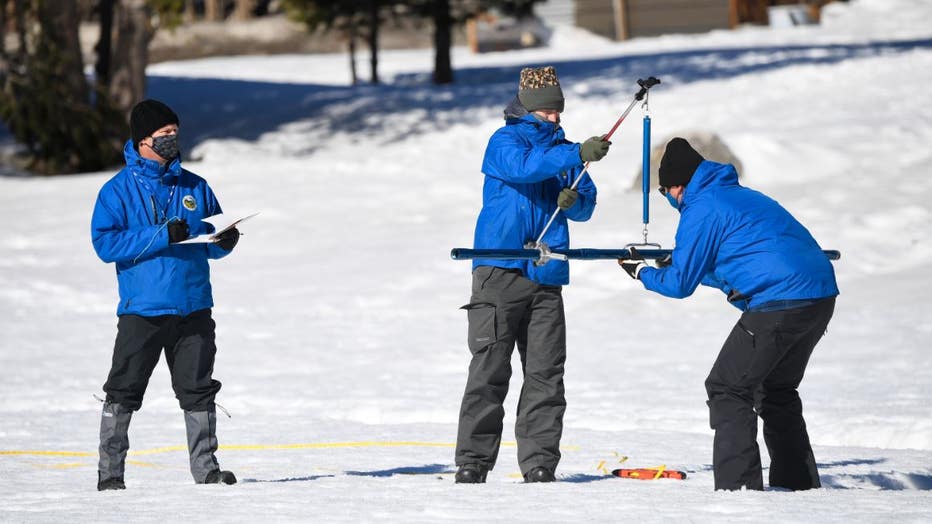California's 1st snowpack survey of 2025 may offer promise, but will it last?

California's 1st snowpack survey of 2025 may offer promise, but will it last?
California's first monthly snowpack survey comes on Thursday. It's likely to be reasonably good for this early part of the rain and snow season.
Oakland, California - California's first monthly snowpack survey comes on Thursday. It's likely to be reasonably good for this early part of the rain and snow season.
As the new year begins, it's good to take a look back and see what's happened with California's fire and water; essential elements, but also something that can lead to real problems. The Golden State had some big fires last year, but not in swarms.
In 2024, California, Calfire and the U.S. Forest Service battled more than 8,000 fires that consumed just over a million acres. In 2023, aided by a very wet year, there were about 1,200 fewer fires that burned less than a third of the acres. Even combining both years, that's fewer acres than the annual average over five years.
"If you compare where we were 20 years ago, 10 years ago, you can just tell that the innovation, the technology that we have to use and also the public's education on being fire safe is just so much better than where we were," said Battalion Chief Brent Pascua, Calfire’s Public Information Officer.

L-R) Andy Reising and Anthony Burdock, both Water Resources Engineers in the Snow Surveys and Water Supply Forecasting Unit, and Sean de Guzman, right, Manager of the California Department of Water Resources Snow Surveys and Water Supply Forecasting
Super aggressive fire response, fuel clearing projects, utility system hardening, home hardening and more than a thousand forest-surveilling cameras monitored 24/7/365 by artificial intelligence seem to be paying off. I've been reading a lot about that and I'm sure it has. To get to a fire quicker, you're going to save lives and property too. So, I think that's a big deal," said David Dyess, a hiker we met at Lafayette Reservoir. "I feel like this is a great opportunity for us to improve the technology as you to continue working hard to prevent fires," said hiker Bimba Mansaray.
California's six mega-reservoirs are at 122% of their historical average levels at the beginning of 2025, slightly better than the same time last year.
This suggests that California is in very good storage position right now so long as people continue to conserve. "I think that there should be more mandates about, you, know, conserving water and reminders constantly because, as you said, we don't know what he have ahead of us," said hiker Susan Rix.
Right now, the average statewide snowpack is 115% of its historical average. But it's only 40% of what it would need to be on April first, the last major snow survey of the year
The big concerns for reservoir levels and snowpack is that Mother Nature might turn off the spigots, as she's done in several years over the last decade. So controlling and mitigating fires and conserving and wisely using water really is paying off for the state of California.
Featured
California's water supply gets a grade of A+ due to Sierra snowpack
Average performance usually earns a grade of C, but for the state water supply, it's an A plus because we are slightly above average with a historical snowpack for the Sierra and Trinity Mountain ranges.


